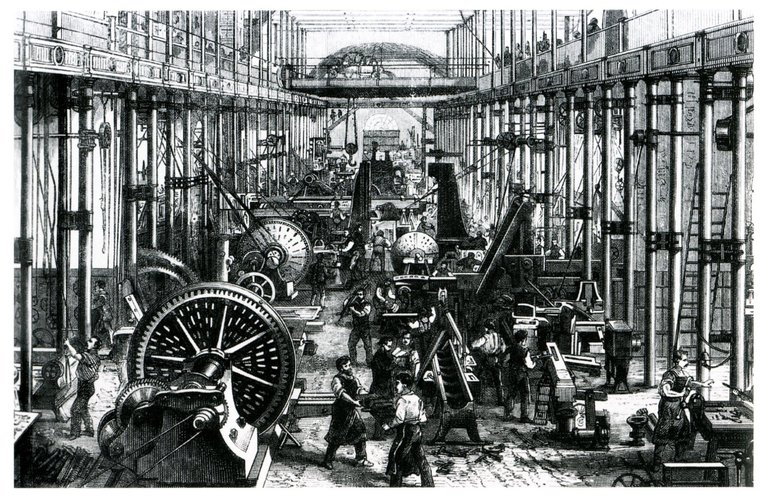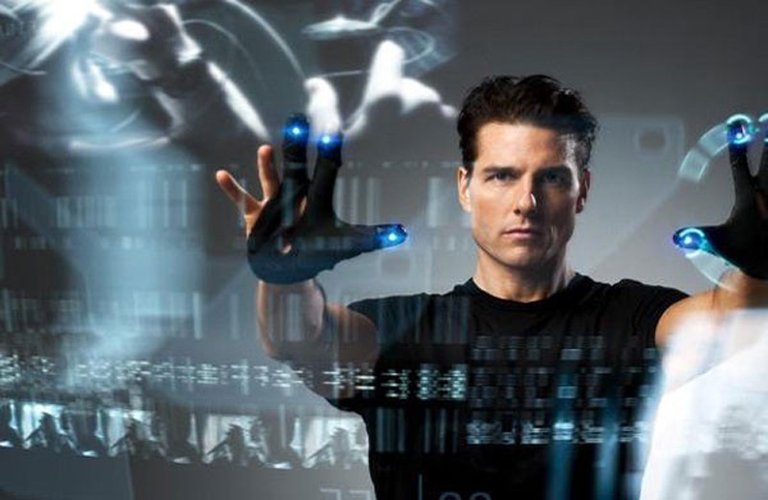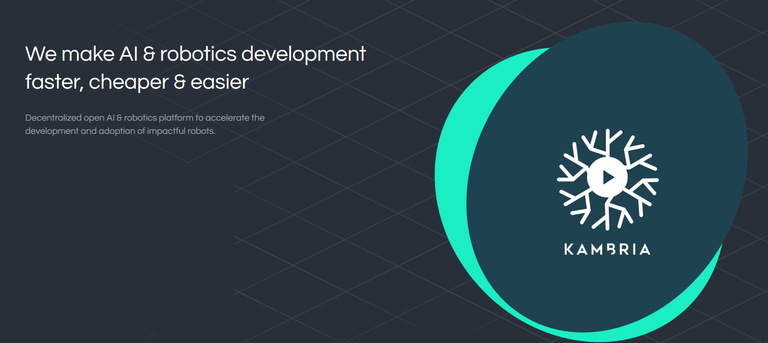
Innovations have always played a prominent role in the evolution of mankind and have had a tremendous impacted on societies. Whether it was the invention of the wheel that allowed for better travel or transportation; the printing press that made newspapers and information largely available to the masses; the steam engine which was the driving force behind the first industrial revolution; or the high-tech advances in robotics and artificial intelligence, they all drastically changed, or will change, people’s lives.
The first and second industrial revolution
The first industrial Revolution began in Great Britain during the late 1700s and during the early 1800s quickly spread throughout the world. The second Industrial Revolution (commonly referred to as the American industrial revolution), started somewhere between 1820 and 1870. The first two industrial revolutions can be characterized by the invention of the steam engine, which drastically reduced the time it took to manufacture products. As a result of the more efficient manufacturing process the products could be manufactured cheaper, leading to lower prices. In addition, low-priced steel stimulated the construction of new infrastructure such as railroads. It goes without saying that the first industrial revolution had a profound impact on the way people lived and did business during that period. The innovations that took place during that period has formed the basis for the creation of capitalism and the modern factories that we know today.

Because factories became more productive, there was an increased need for employees and managers; hence providing a lot of extra employment opportunities. In addition, increased innovation spurred on research and education, clearing the path for revolutionary discoveries, such as the: telephone, light bulb and X-ray. In that regard, the first industrial revolution initially improved people’s lives, especially concerning education, health care and nutrition.
However, the first and second industrial revolution also led to a reduction in agriculture. Many farmers tried their luck in the cities because they could earn more money as a factory worker than a farmer. The large increase in factories also caused a steep increase in pollution and it could be argued that it formed the basis of our current environmental problems. As years went by increasing profits became more and more important. This started a chain of deteriorating working conditions (e.g. long hours, minimal breaks, inadequate pay), resulting in health issues amongst most of the factory workers. Ultimately during the aftermath of the second industrial revolution economic insecurity became a basic way of life, with the depression of the 1870s putting millions out of work.
The third industrial revolution
The Third Industrial Revolution (also referred to as the Digital Revolution), entails the progression of technology from analog electronic and mechanical devices to the digital technology that we know today. The third industrial revolution started around the 1960s with the adoption of digital computers, marking the beginning of the Information Age. At the core of the digital revolution lies the mass production and widespread use of what are called digital logic circuits and their derived technologies, such as: the computer, cellular phones and the internet. These innovations have completely transformed the way we live and do business. Simply look at the panic that overcomes a person, when one loses his/her smartphone, or is unable to get a decent internet connection.
The third industrial revolution has brought us technology that allows for greater interconnectedness, easier means of communication, and the acces to information that in the past (pre-internet) would have been much harder to come by. One can even claim that it enhanced our freedom to acquire information, as it is much harder nowadays for governments to dictate which information we are, or are not, allowed to see. In addition, computers and the Internet have improved the efficiency of doing business and facilitate globalization and outsourcing even by small local companies.

Although this third industrial revolution has brought about a lot of positive aspects, there are also some issues that raise concern. For instance, news and media nowadays are becoming less and less reliable. This is mostly due to the fact that everyone can post their news articles on the world wide web, whether they are a certified journalist or merely an unskilled amateur. Recent years there have been increased instances of fake news and it is hard for readers to determine how valid the information is. Another big problem is the high level of anonymity. On the Internet it is fairly easy to pretend to be someone else, making it easy for malicious actors to deceive people over the internet or act as hunting ground for Internet predators. Also the widespread possibility to share or copy protected work has drastically increased Copyright and trademark issues. Nowadays it is easy to download illegal copies of your favorite songs, films or videogames. Al these issues remain sensitive topics and clearly show that advances in technology have both positive and negative sides that should be taken in account.
The fourth industrial revolution
As the digital revolution continues, even at a faster pace than when it first started, we are now at the stage of what is called the fourth industrial revolution. This revolution represents new ways in which technology becomes integrated within societies and even the human body. Emerging technology innovation that mark the fourth industrial revolution include: biotechnology, nanotechnology, artificial intelligence, robotics, autonomous vehicles, quantum computing, 3D printing, and The Internet of Things.

This fourth industrial revolution will probably have the biggest influence on mankind. The social impact on this revolution might be the greatest of all time as many people may need to shift from having a day-job, working 5, 6 or 7 days a week, to looking for other ways to make one-self useful and contribute to society with something productive.
Former U.S. President Obama warned people that earn $20 an hour or less, that they are in a high-risk category of losing their job to a robot in the near future. Automation that is currently being improved upon will leave 50% of the U.S. population jobless around 2030 according to reports. It is sufficient to say that other developed countries can also expect similar figures as automation development continues.
Frontier technology
According to the World Economic Forum, the 4th industrial revolution is: ‘characterized by a fusion of technologies that is blurring the lines between the physical, digital and biological spheres.’
These characterizations fit frontier technologies perfectly. Frontier technologies are continually changing innovative technological advancement that offer groundbreaking real-world solutions. A few of the examples of technological industries that are producing ground-breaking innovations that I briefly want to highlight are: Internet of Things, 3D-printing and Robotics and AI.
Internet of Things
According to Wikipedia, the internet of things is the network of physical devices, vehicles, home appliances, and other items embedded with electronics, software, sensors, actuators and connectivity which enables these things to connect, collect and exchange data. Internet of things products are often referred to as SMART products because of its internet connectivity.
3D printing
In 1988 the technology that is used today in three-dimensional printing was invented by S. Scott Crump for his company Stratasys. Fused Deposition Modeling (FDM) uses an additive principal by laying down material in layers. By using a plastic filament or a metal wire which will be unwind from a coil, a part can be produced by programming the 3D printer. Stratasys Ltd. Was the first company to manufacture and launch an FDM-based three-dimensional printer. 3D-printing is industrially used on a large scale. For instance, telepresence robot manufacturer OhmniLabs, uses a 3D-printer to manufacture Ohmni. Similarly, Food Ink is the world’s first 3D-printing restaurant, in which all the food, utensils and furniture are completely produced through 3D-printing.
Robotics and AI
Robotics is the branch of technology that deals with the design, construction, operation and application of robots. After becoming widely adopted in factories at the assembly lines, the robotics industry has developed new and exciting fields to further develop, such as Artificial Intelligence (AI). AI provides robots with intellectual abilities. This enables businesses to automate their warehouse and factories, it will signal predictive maintenance, it allows for better supply chain management and provide more accurate fault detection and isolation.
Kambria Network, is a project that is focused on accelerating the Robotics and AI industry and aims to create a community of industry professionals to collaborate on robotics and AI related products.
Kambria

Kambria’s objective is to disrupt the Robotics and AI industry by developing an open innovation platform that allows for developers, manufacturers and companies to collaborate and grow the industry. Kambria integrates a reward system to incentivize contributors to the platform with KAT tokens. The KAT token is Kambria’s native token and will be used to: pay for platform access, reward participation, and align incentives to all stakeholders in the entire ecosystem.
Kambria is founded by parent company OhmniLabs, which is known for the successful manufacturing of the telepresence robot called Ohmni. By making use of 3d printing technology and streamlining an iterative design, OhmniLabs can offer an affordable telepresence robot to customers on a global scale. While developing Ohmni, the team noticed they were researching technology that had already been researched. They reasoned that if they could have accessed that knowledge beforehand, instead of reinventing the wheel themselves, they would have saved a lot of time and money. Hence the idea of Kambria was born; a platform on which thoughts, ideas, research and designs could be shared amongst users, whereby contributors would be incentivized through a fair ecosystem. The existence of such a platform would make the robotics industry more efficient and cheaper.
Five main pillars
Kambria Network is comprised of the following five main pillars:
- The KDNA codebase: The platform’s foundation is the Kambria codebase (KDNA). The codebase contains all the information, software, firmware, hardware and AI needed to build a robot.
- The Manufacturing Alliance (KMA): The codebase will be reinforced by the manufacturing alliance, which allows users to prototype and manufacture the robots created with the use of the KDNA codebase.
- Value capture: This layer will use KAT tokens to bring value to the platform. Various value points will be created. For instance, when a robot is manufactured, after the value point occurs the fee will be enforced and the collected KAT tokens will be disbursed to the manufacturer and into the community reserve. In essence this guarantees the longevity of the Kambria platform and ensures that the project is not dependent on donations.
- The innovation bounty marketplace, is the place where manufacturers can offer robotic parts in exchange for a bounty. In addition, interested parties can launch a crowdfunding campaign to recruit developers willing to manufacture a robot based on their demands.
- Legal protection: The community collaborate to protect the integrity of the platform. Users can for instance flag a possible violation by creating a case (a smart contract), that is able to track votes and donations to handle the potential legal violation. In addition, there will also be a fair use policy in place that deals with free-riders on the platform in an adequate way.
It will be interesting to see how the new frontier technology will unfold during the upcoming fourth industrial revolution, but chances are that the Kambria platform can speed up the next evolutionary step by facilitating cooperation between researcher, developers and manufacturers.
Kambria Social Media
Website: https://kambria.io/
Whitepaper: https://bit.ly/2y7eckC
Telegram (ENG): https://t.me/kambriaofficial
Twitter: https://twitter.com/KambriaNetwork
Medium: https://medium.com/kambria-network

Disclaimer: This article is not intended as investment advice. It is just my personal opinion about Kambria. You should always do your own research #DYOR. Kambria incentivizes me for writing this article and encourages me to express my own opinions.
Subscribe to my channels: Medium, Twitter and Steemit if you enjoy my articles and would like to be informed about blockchain, cryptocurrency projects, and news. You can also read my articles on LinkedIn.
CryptoShowdown
I upvoted your post.
Keep steeming for a better tomorrow.
@Acknowledgement - God Bless
Posted using https://Steeming.com condenser site.